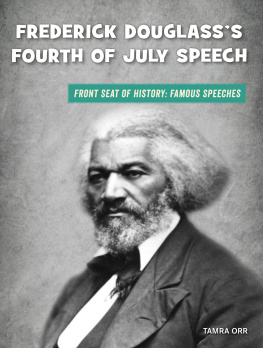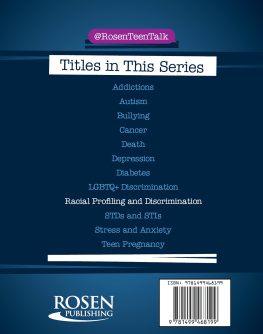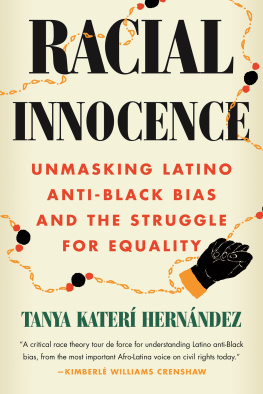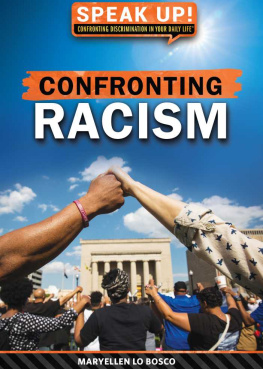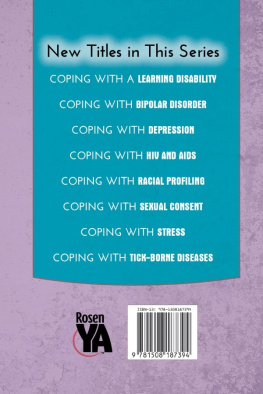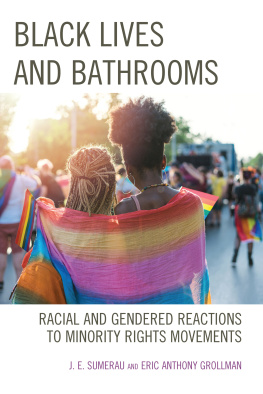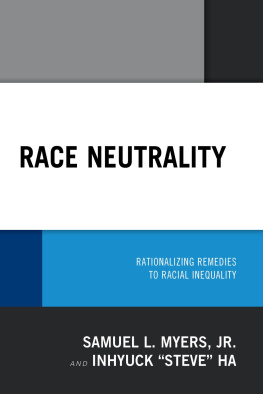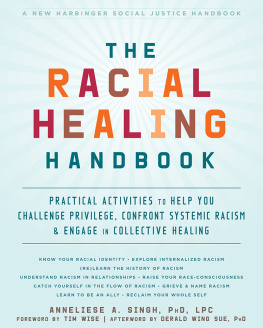Published in 2018 by The Rosen Publishing Group, Inc.
29 East 21st Street, New York, NY 10010
Copyright 2018 by The Rosen Publishing Group, Inc.
First Edition
All rights reserved. No part of this book may be reproduced in any form without permission in writing from the publisher, except by a reviewer.
Library of Congress Cataloging-in-Publication Data
Names: Orr, Tamra, author.
Title: Coping with racial inequality / Tamra B. Orr.
Description: First edition. | New York NY : Rosen Publishing, [2018] | Series: Coping | Includes bibliographical references and index. | Audience: Grades 712.
Identifiers: LCCN 2017001578 | ISBN 9781508173960 (library bound book)
Subjects: LCSH: RacismUnited StatesJuvenile literature. | Race DiscriminationPreventionJuvenile literature. | Race discriminationPsychological aspectsJuvenile literature. | United StatesRace relationsAnecdotesJuvenile literature. | Anti-racismUnited StatesJuvenile literature. | Social actionUnited StatesHandbooks, manuals, etc. | TeenagersPolitical activityUnited States. | Self-help techniques.
Classification: LCC E184.A1 O78 2018 | DDC 305.800973dc23
LC record available at https://lccn.loc.gov/2017001578
Manufactured in the United States of America
CONTENTS
Introduction
CHAPTER ONE
A History of Race in America
CHAPTER TWO
Getting Under Your Skin: Race Today
CHAPTER THREE
Face to Face: Daily Discrimination and Personal Prejudice
CHAPTER FOUR
Coping, Healing, and Moving Forward
CHAPTER FIVE
Be Bold and Brave
GLOSSARY
FOR MORE INFORMATION
FOR FURTHER READING
BIBLIOGRAPHY
INDEX
INTRODUCTION
I t was Caros sixteenth birthday and she had big plans. She and six of her girlfriends had coordinated what they were wearing to school that dayeveryone wore shades of pink and maroon. Then it happened. All of us were accused by our schools assistant principal of being in a Mexican gang, Caro explained years later in an interview with the author. They thought we were wearing our gang colors to school.
Without parental permission or the students knowledge, photographs of the girls were passed to the gang task force of the Austin, Texas, police department. We were expelled and our parents were called to come and pick us up, Caro said. None of the students were given a chance to explain or defend themselves. Caro and her friends were Latinas of mostly Mexican heritage attending a primarily white high school.
After a few outraged parents showed up defending their daughters, our punishment was changed to a suspension, Caro explained. All of the girls felt they were specifically targeted because they were Mexican. I remember an abundance of outrage and disbelief that the school administrators would go so far as to expel innocent kids, she added. I was fortunate that I had parents who believed in me, who knew me, who defended me and stood up against such an intimidating force.
Even though the girls punishments was reduced, Caro felt so disgusted and humiliated that [she] decided not to return to that school ever again. She further explained, I was never ashamed of my Mexican heritage but [I was] angry that, as Latinos, we had been mistreated and falsely accused because of our ethnicity. While the rest of her friends returned to the school, Caro went to an alternative high school. She worked hard and graduated at 16 years old with a perfect 4.0 grade average. The American Civil Liberties Union (ACLU) stepped in when some of the families sued the Austin Independent School District, and the case was settled out of court.
Caro went to college and graduated as valedictorian with an associates degree. She participated in the Oregon Council for Hispanic Advancement through the Oregon Leadership Institute. Caro chose to homeschool her daughter, in part because of the incident, and hopes to become a stronger, better advocate for people like herself and her friends.
Being treated differentlyor negatively because of ones race is nothing new in the United States. For centuries, here and abroad, many people have been mistreated and misunderstood simply because they had a different shade of skin, or wore different clothing. Despite legislation and slowly changing attitudes, many are still bullied, attacked, or vilified.
This illustration of an 1830s slave auction is just one reminder of the ongoing racial injustice and intolerance throughout the nation's history.
Unfortunately, no single organization, idea, or movement, let alone book, is enough to address racial inequality. Hopefully, you will learn to recognize inequality whenever it is occurring; find methods for coping if it is happening to you or someone around you; and finally, discover ways of making your life and the lives of those you care about better by making positive changes.
CHAPTER ONE
A History of Race in America
T he world has changed greatly over the past several centuries. If you transported a few people from the eighteenth century to the modern world, they would most likely be shocked and overwhelmed by the changes. Seeing automobiles, huge skyscrapers, and various forms of twentieth- and twenty-first-century technologies, they would assume they were having a strange dream of some kind. It truly would be an alien world to them because of the vast advances humans have made.
Unfortunately, one serious issue has persisted for centuries: racial inequality. In particular, the United States, Canada, and many other nations have fallen woefully short of guaranteeing and providing the equal rights they promise. Much progress has been made, but many of the systems that prop up inequality have merely changed shape.
Europeans first conquered the Western hemisphere at the expense of its native inhabitants. Unlike the rapid progress of technology, medicine, and other man-made phenomena, the efforts to reform our social systems and eliminate inequality have been far slower and more complicated. To understand why todays world has a problem with racial inequality, it is essential to recall yesterdays battles for civil rights and self-determination.
Losing their Land
History is endlessly full of stories of brave and adventurous explorers heading out into the unknown to discover new lands. Those stories often portray these men as heroes, and in many ways, they were. They risked their lives in order to see what really existed across the distant ocean, around the next bend in a river, or on the other side of a mountain range. It is easy to imagine that many of the lands these explorers found were unpopulated and waiting to be discovered. Instead they were often home to various indigenous populations. In the conflicts that erupted between these people and European explorers and conquerors, the indigenous people were either killed or mistreated. Many fought back, but they were eventually beaten by the Europeans superior military might, or by European diseases that ravaged their populations.

A chief of the Ute people stands before Chimney Rock, in Ute National Park in Colorado. The Ute are one of many indigenous tribes displaced by European settlers since the nation's founding.



